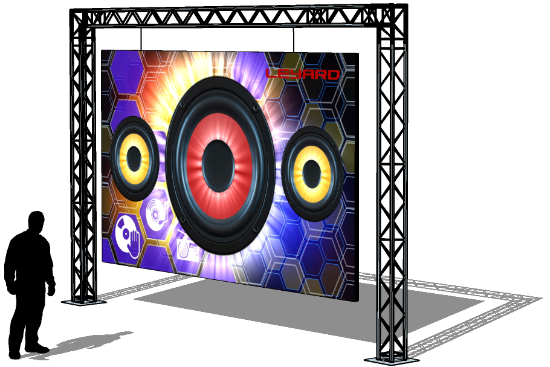LED panel panels are increasingly favored in various settings, from homes to businesses as well as public spaces. These panels are known due to the vivid as well as vibrant displays, which make these suitable to communicating data, ads, and engagement. However, understanding the brightness measurements for Light Emitting Diode panel panels is essential for ensuring ideal display performance. Illumination can be quantified using units known as candelas, that indicate how much light produced by a panel. A greater number of number in candelas, the brighter the display will be. For instance, instance, one panel with 1,000 nits stands considerably more vivid than one with 500 candelas, making it more suitable for brightly lit environments.

As you selecting an LED panel screen, it is important to take into account the setting where which it will be placed. For well-lit lit areas, such as retail environments and outdoor settings, a higher brightness rate becomes essential for guaranteeing clarity. Conversely, within dimmer environments, such as cinemas or conference rooms, lower diminished illumination rate might suffice. This is bright excessive luminosity within an dim environment can result to discomfort for viewers, making it harder to focus on the display. Thus, understanding the specific requirements for an setup site will aid in selecting a right brightness level for optimal viewing experience.
Another important factor to take into account is contrast differential proportion in an Light Emitting Diode panel screen. This ratio measurement measures how much disparity exists between the brightest most luminous white and the dark black that the screen can look what i found produce. A higher contrast ratio indicates the display can it is capable of present more detail as well as richness, which improves general visual clarity. For instance, one screen boasting an differential proportion at ten thousand to one is able to show images featuring more vivid hues as well as sharper details compared to one with a ratio of 1,000:1. Such becomes especially crucial in instances where displaying images or videos which demand greater definition as well as fine details, including slideshows or advertising material.
Moreover, the technology behind Light Emitting Diode wall screens has an essential role in their brightness as well as total efficiency. Various kinds in Light Emitting Diode methods, such as OLED and LCD, have unique traits which impact the way brightness is perceived. Organic Light Emitting Diode panels typically offer better differential as well as darker blacks, which may improve a visual experience in dim settings. On the other hand, traditional Light Emitting Diode screens might be more suitable for well-lit spaces because of their ability to generate greater levels of illumination. Comprehending such technological differences can help users in deciding on informed choices according to their specific needs.
In conclusion, consistent maintenance and adjustment for Light Emitting Diode wall panels may assist maintain ideal illumination and performance long-term. Dirt and particles may build up on the screen, impacting the brightness as well as sharpness of a visual. Periodic cleaning and expert adjustment can guarantee the the panel functions at its best, offering uniform this website image clarity. Moreover, certain advanced LED panel panels come built-in integrated features which allow users for adjust brightness settings as well as color adjustments based on individual wants. Through taking these steps, users will guarantee that LED Light Emitting Diode wall screens deliver the optimal visual efficiency, no matter the environment in that they are used.